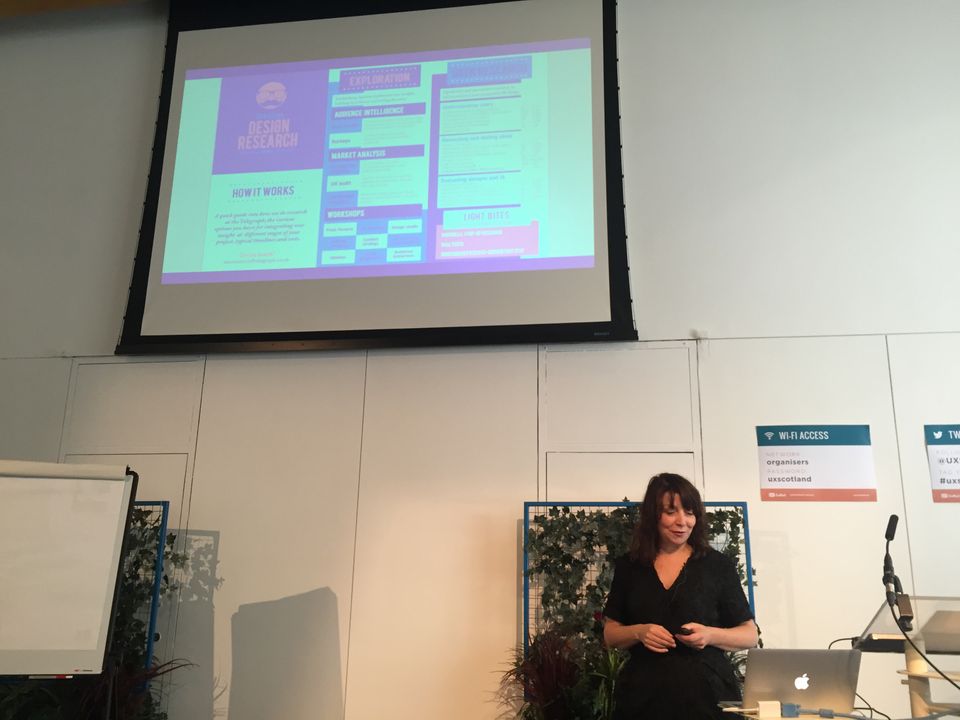Designing Engaging Products

It is a truth, universally acknowledged, that a newspaper of goods standing must be in want of a UXer. Namesake jokes aside, Jane Austin – a Glaswegian ensconced in London at the Telegraph via GDS and other UX initiatives – spoke about the challenges facing the Telegraph, how they’re dealing with them … and more generally the ethical issues that designers should and must be grappling with in a distraction-led study.
Most people based in the UK wouldn’t be surprised to know that the Telegraph has a massive user base – Austin cited 9 million – and a heritage of good reporting, particularly foreign correspondents (a saving factor when Austin had to break the news to her left-leaning family that she was thinking of joining the paper). However, some things that don’t work in its favour are it not having a centralised system – no beta system as per the Beeb or the Guardian here! – and the more far reaching system of changing newspapers’ perception of how news is written about, edited, and disseminated across the web.
For the Telegraph team, this means that (along with more generally making a better platform for sharing news), the team have had to pick strategic small projects in order to test out hypotheses and get traction. Given they have such a large userbase, they work from behaviours rather than personas.
These behaviours and personas have led to some interesting projects. For example, for older people looking for a hub and spoke wheel, the idea of having a app with news that you can finish (more like a traditional paper rather than the never-ending-web) is appealing. (It’s also not dissimilar to the mechanics of the fantastic Yahoo News Digest app). They’ve also investigated means of targeting casual sporting fans (interestingly, the complete opposite of the demographic of last years’ Guardian UX Scotland talk) with more irreverent content.
Austin also cited Goodhert’s Law—paraphrased as “Once you measure something, it changes”—and specifically how differing revenue models have affected online journalism. While clicks and eyeballs have changed journalism forever (OH HAI CLICKBAIT) changing the ad model towards time that an ad was viewed on a page challenged the Telegraph to try making longform content. As it turns out, well written and formatted content such as movie reviews is also loved by google, to the point that at one point some of their reviews were outranking IMDB! (Even at this point some entries are still in the top five results).
A lot of her work is also about creating an internal culture of UX, from a £300 usability lab and Testing Tuesdays to a recipe book of research techniques, she’s hoping to get more traction to understand user behaviour.
Beyond this work, Austin is becoming increasingly conscious of the ethical dilemmas that UX designers can’t choose to ignore. She credited Lauren Currie’s talk from the day before (of which I’ve blogged an earlier version) as tackling the issue head on. She noted the issue of distraction, not unlike Dan Saffer had done the previous day, but now from a designer’s perspective. Can we really use gamification and encourage people to be ‘hooked’ to our services without being aware of its results? She cited studies of people using Tinder and casinos to show some concerning facts – using services such as Tinder raise our fear related cortisone levels in as little as 20 minutes, and addicted gamblers return to try and get that little thing that’s missing, a particular missing that’s often encouraged in the said books on creating loyalty to online services. She didn’t provide easy answers, but did suggest challenging our work to see if we really can choose different measures that allow for better, more ethical, results.
Member discussion